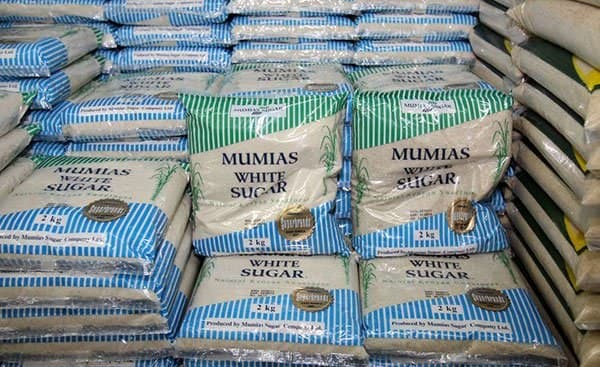We're loading the full news article for you. This includes the article content, images, author information, and related articles.
A sharp decline in domestic sugar output is forcing Kenya to increase reliance on expensive imports, threatening higher consumer prices and straining foreign exchange reserves as the nation confronts a projected 400,000-tonne shortfall.

Kenya's sugar industry is facing a severe crisis, with domestic production plummeting and the country bracing for a surge in imports to meet national demand. Official data released in September 2025 reveals a 15.8% drop in sugar production in the first six months of the year, falling to 323,752 metric tonnes from 384,356 tonnes during the same period in 2024. [4, 6, 10] The decline was particularly stark in June 2025, when output was nearly half that of the previous year. [4, 6]
Projections for the coming year paint an even grimmer picture. A report from the United States Department of Agriculture (USDA) dated April 18, 2025, forecasts that Kenya's sugar production will fall by nearly 20% in the 2025/2026 marketing year, down to 650,000 metric tonnes from an estimated 810,000 tonnes in the previous cycle. [3, 8, 12, 13, 14] With annual consumption estimated at over one million tonnes, this creates a significant supply gap that can only be filled by imports. [5, 24]
The collapse in production is attributed to a combination of factors. A primary cause is a significant reduction in the area under sugarcane cultivation, which is expected to shrink from 190,000 hectares to 150,000. [8, 13, 16] This is a direct result of overly aggressive harvesting in the previous season, leaving fewer mature plantations available. [3, 13] Compounding this, adverse dry weather conditions have caused average cane yields to drop from 56 to 51 metric tonnes per hectare. [3, 8, 13]
Long-standing inefficiencies within the milling sector exacerbate the problem. State-owned mills, burdened by outdated equipment, struggle with sugar extraction rates as low as 5.6%, nearly half the 10% efficiency of their private counterparts. [3, 12] Furthermore, scheduled factory shutdowns for maintenance are expected to tighten supply further, particularly during peak demand periods. [3, 22] The Kenya Sugar Board has also warned of shortages in mature cane, leading to disruptions in the Western sugar belt. [4, 10]
The consequences of this production deficit are far-reaching. To bridge the supply gap, Kenya is projected to increase its sugar imports by nearly 38%, to 600,000 metric tonnes in the 2025/2026 period. [3, 8, 18] This surge in imports is expected to cost the country upwards of an additional $100 million in foreign exchange, placing further pressure on the national budget. [3]
Kenyan households are already feeling the impact. Retail prices have shown volatility throughout the year. In January 2025, the average price per kilogram rose to KSh 157 from KSh 149 in December 2024. [9, 15] While the Kenya National Bureau of Statistics (KNBS) reported a slight decrease to KSh 185.21 in September 2025, a recent Central Bank of Kenya survey indicates that consumers widely expect prices to rise again due to the ongoing cane shortages. [22, 26]
In an effort to stabilize the industry, the government implemented a 4% Sugar Development Levy on both locally produced and imported sugar, effective Monday, July 1, 2025. [4, 10] While the levy is intended to fund sector rehabilitation, there are concerns it could contribute to higher consumer prices in the short term. [4, 10]
Kenya's reliance on imports is managed through a delicate policy framework, primarily the Common Market for Eastern and Southern Africa (COMESA) safeguards. These measures, which limit duty-free imports from the trade bloc to 350,000 tonnes annually, were extended for a seventh time in November 2023 but are set to expire in November 2025. [13, 16, 17] There is growing uncertainty within the bloc as to whether another extension will be granted, which could expose Kenya's inefficient sector to stiffer competition. [16, 24]
The situation presents a significant challenge for the government's long-term goal of achieving self-sufficiency in sugar production. While officials had previously aimed to position Kenya as a net exporter, the current crisis underscores the deep-seated structural issues—from low farm yields to inefficient milling—that continue to plague one of the country's most vital agricultural sub-sectors. [22, 27] For now, the nation remains dependent on regional partners to keep its shelves stocked, a dependency that comes at a significant economic cost.
Keep the conversation in one place—threads here stay linked to the story and in the forums.
Other hot threads
E-sports and Gaming Community in Kenya
Active 7 months ago
Popular Recreational Activities Across Counties
Active 7 months ago
The Role of Technology in Modern Agriculture (AgriTech)
Active 7 months ago
Investing in Youth Sports Development Programs
Active 7 months ago